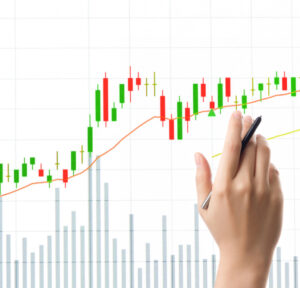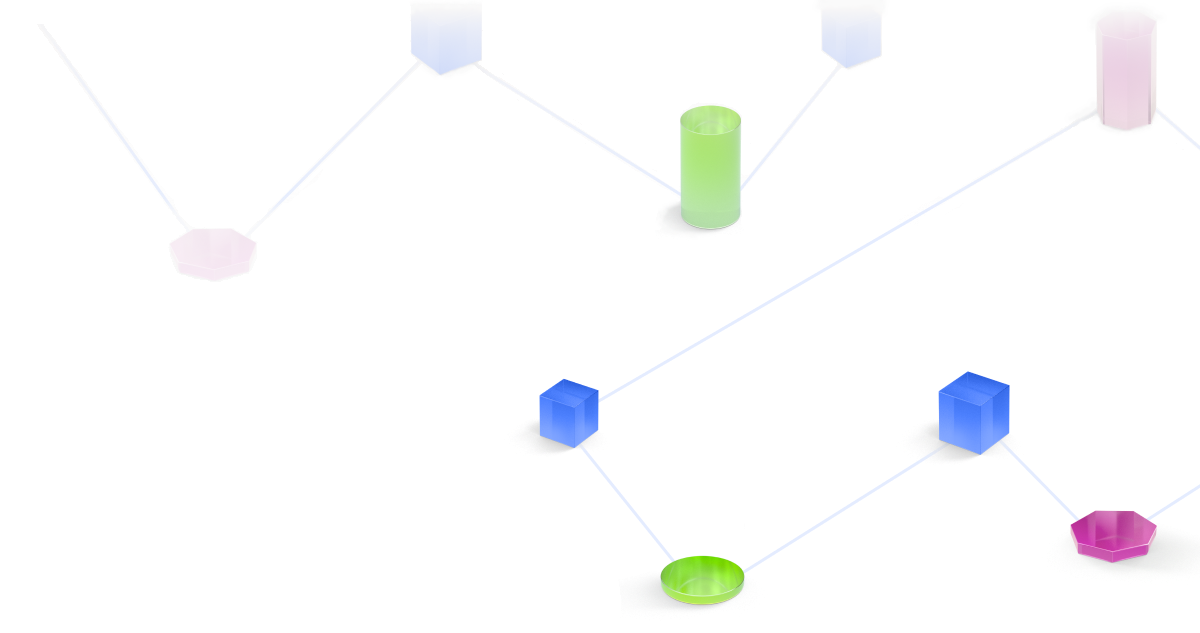How do interest rates affect the market?

One key economic event that moves the financial markets is the interest rates set by central banks worldwide. In this article, we’re looking at how Interest Rates affect the market.
In May of 2022, the US Federal Reserve (the Fed) raised its interest rate by 50 basis points, its first hike in 22 years. As a result, major indices declined sharply across the US, Asia, and emerging markets. At the same time, the US dollar (USD) spiked to a two-decade high, while the South African Rand (ZAR) declined 1.4% against the dollar.
Understanding what moves the markets is key to your trading success if you’ve opened a stock or currencies trading account. Before you start using your stock trading app, it would be best to recognise the correlations between interest rates and financial instruments.
Klips explains: What is an interest rate?
When discussing interest rates, we refer to the rate at which banks borrow money from one another. This rate is set by the central bank of any nation and is named by different terminologies across different countries.
The US Federal Reserve and Interest Rates
As the US is the world’s largest economy (at the time of writing), the country’s central bank (the Fed) and its monetary policy can hugely impact the global markets. Experienced traders follow the Fed’s interest rate policies, regardless of their trade instrument.
The following two terms are essential to understand:
- Fed Funds Rate: This is the rate at which banks lend funds to each other overnight to maintain reserve requirements in the short run.
- Discount Rate: The rate at which banks borrow funds from the US Federal Reserve.
When you hear about the US Federal Reserve hiking or lowering interest rates, it refers to the Fed Funds Rate. The Federal Open Market Committee (FOMC) decides on the interest rate policy over several meetings yearly. The easiest way to keep track of these events is with an economic calendar and press releases. Any indications of an interest rate hike or drop may trigger market volatility in various instruments.
What is the interest rate in South Africa?
In South Africa, traders trading stocks or other instruments keep track of the repo rate on their trading platform. The repo rate is the interest rate at which the South African Reserve Bank (SARB) lends money to commercial banks.
Interest rate as a monetary policy tool
Interest rates impact the money supply in economies. It is the primary tool used by central banks to increase or decrease the money supply.
Central banks have two main priorities: to sustain economic growth and control inflation when economies do well and experience growth, consumer activity increases, which usually means more spending. With more money in circulation, which is focused on buying limited goods and services, inflation increases. Inflation is an increase in the prices of goods and services over a specific timeframe.
An inflation rate higher than the central bank’s target is alarming for the economy. When this happens, the central bank increases the interest rate to make it more expensive for banks and businesses to borrow money, thereby reducing the money supply in the economy. For example, in its May 2022 meeting, the SARB increased its benchmark repo rate by 50 basis points to 4.75% to curb inflation.
Conversely, if economic activity reduces, the central bank lowers interest rates to encourage more spending and investments. With lower interest rates, companies find it easier to borrow money to expand their businesses and create more products, which can lead to increased employment. For example, the US Fed reduced its benchmark interest rate to 0%-0.25% on March 15, 2020, to protect the economy from the consequences of the pandemic.
Typically, you will indicate what to expect from central bank meetings by looking at the most relevant economic indicators. Here are some indicators you need to keep an eye on when trading.
- The Consumer Price Index (CPI)– this measures of the overall change in consumer prices and is usually shown as an annual figure.
- Unemployment rate– The official labour departments of countries typically release employment reports every month, which include the unemployment rate, or the percentage of the total workforce that is actively seeking employment but currently does not have a job.
- Real estate market– Traders keep an eye on data like housing starts, house price index and building permits to understand the state of the real estate market in the country, giving them a broader picture of how the economy is fueled.
- The consumer spending and manufacturing index – Data related to private spending on the consumption of goods and services and corporate spending on purchasing raw materials and machinery give insights into the state of the economy.
- Balance of Trade – This is the difference between a country’s imports and exports. Trade deficits occur when the value of a country’s imports exceeds the value of its exports.
How do interest rates impact the stock market?
A rise in interest rates makes it more expensive for companies to borrow money. This is because financial institutions pass on the increase in interest rates to their customers. Businesses in turn, may pass on the higher cost of borrowing to their customers by raising the prices of their goods and services. On the other hand, individuals also face higher credit card and mortgage interest rates, which lowers their disposable income. Due to this contraction of disposable income along with higher prices of goods and services, people reduce their consumption, adversely impacting the sales and profitability of businesses. This exerts pressure on companies’ stock prices, which in turn lowers stock indices. So, a rise in interest rates tends to dampen the stock market in the short term.
However, when trading stocks or stock derivatives, you need to know that interest rates impact different sectors differently.
For example, financial institutions like banks, insurance and mortgage companies tend to gain with an increase in interest rates as they charge more for lending. Stocks of consumer staples, which include essentials like food and beverages, also tend to perform well when interest rates are higher. Stocks of industries, such as manufacturers of kitchen appliances or HVACs, also benefit from higher interest rates.
Become an educated trader. Join and learn to apply new skills>>
How does the Interest rate impact the currencies market?
Currencies are traded in pairs in the currencies market, and exchange rates are quoted in terms of the base currency.
For example, if the EUR/USD = 1.07, it means €1 is worth US$1.07. Here, the euro is the base currency, while the US dollar is the quote currency.
When a central bank raises interest rates in an economy, it makes the domestic currency more appealing to foreign traders.
So, if you are trading and believe that the US Fed will increase its interest rates, you might choose to open a trade where you buy US dollars (USD) in exchange for the euro (EUR) in anticipation that the price of the USD will go up after the rate announcement.
Along with you, many other traders will do the same, increasing the demand for the USD. This leads to an increase in the value of the greenback. An increase in the value of the US dollar will lead to a decline in the euro’s value in the above example. This interest rate differential causes currencies to appreciate or depreciate relative to each other. For example, when the European Central Bank (ECB) hinted at a rise in interest rates on May 24, 2022, the euro rose by 0.2% against the US dollar.
Conversely, a decline in interest rates can lead to a decline in the domestic currency’s value.
Key Fact
Many other factors impact currency values at any given time. If a country’s inflation rate is much higher than that of others, its domestic currency might not see much of a rise, despite the central bank increasing rates.
The impact on cryptocurrency prices
You might think that policies focused on fiat currencies don’t impact cryptos at all. But there is an overall impact of monetary policies on the cryptocurrency market.
When central banks increase interest rates, it dampens the overall risk appetite in markets, which decreases the demand for more volatile instruments like cryptocurrencies. For instance, the average daily trading volume for bitcoin declined 60% YoY due to indications of an increase in the Fed Funds Rate in April 2022.
Did you know?
Cryptocurrencies have been showing a correlation with the stock markets for a few years now. They particularly move in tandem with technology stocks.
Navigating interest rates through derivatives
Interest rate announcements can cause market volatility, presenting several opportunities to start trading stocks and other instruments. Whether the market is rising or falling, derivatives may be used to find trading opportunities. This derivative instrument allows you to take positions in the underlying instrument without owning it.
For instance, if you’re trading derivatives in Apple’s stock, AAPL, and believe that the stock price will decline when the US Fed raises interest rates, you can open a short position on the financial instrument. A short position means you agree to sell the financial instrument with plans to repurchase it at a lower price in the future. When executing a short position, if the market moves as predicted, the profit is calculated by the difference between the opening and closing price of the traded instrument.
Similarly, you can take a long position if you predict an increase in the financial instrument price. This means you initiate a buy order with plans to sell it at a higher price in the future. When executing a long position, if the market moves as you predicted, the profit is again calculated by the difference between the opening and closing price of the traded instrument.
Leveraged derivatives further allow you to increase your market exposure by entering a much larger position than what you could afford with your capital alone. You only need to pay a percentage of the total cost upfront.
Although derivatives allow you to trade rising and falling prices in the underlying markets, risk management should be considered in all trades. Proper stop-loss and take-profit orders can help you to limit losses and book profits in time when there is market volatility.
Learn the terms
Interest rate – The rate set by nations’ central banks that domestic banks pay to borrow money.
Going short – Selling a financial instrument in anticipation that its price will drop in the future. E.g. In CFD trading, if you short the EUR/USD, you are selling the EUR and buying the USD to close the trade should your prediction go as planned.
Going long – Essentially, the reverse of going short. If you go long on the EUR/USD, you are selling the USD and buying the EUR.

This information is written by Klips. The information is provided for general purposes only and does not consider any personal circumstances or objectives. Before acting on this material, you should consider whether it is suitable for your circumstances and, if necessary, seek professional advice. No representation or warranty is given as to the accuracy or completeness of this information. It does not constitute financial, investment or other advice on which you can rely. Any references to past performance, historical returns, future projections, and statistical forecasts are no guarantee of future returns or future performance. Klips will not be held responsible for any use that may be made of this information and for any consequences that may result from such use. Hence, any person relying on the information on this page does it at their own risk.
Learn more, understand the markets
Learn

Top AI Companies to Watch: A Deeper Dive
ByAndreea
 3 min.
3 min.Learn

Charting Your Course to Trading Success with Klips
ByAndreea
 3 min.
3 min.Learn

Navigating the ECB’s Monetary Policy with Klips: Empowering Your Trading Strategy
ByAndreea
 3 min.
3 min.Learn

Harness the Power of Dollar-Cost Averaging on Klips Trading Platform Amidst a Bear Market
ByAndreea
 3 min.
3 min.Learn

Blockchain: The Future of Finance?
ByAndreea
 5 min.
5 min.Learn

AMC stock price – What Influences it the most
ByAdmin
 5 min.
5 min.Learn

What are trading signals?
ByAdmin

Trading

3 popular candlestick patterns for forex trading strategy
ByAdmin
 4 min.
4 min.Trading

Learn how simple forex trading is in South Africa
ByAdmin
 5 min.
5 min.Trading

The Warren Buffet of India: Find Out How Rakesh Jhunjhunwala Built His Fortune
ByAdmin
 7 min.
7 min.



